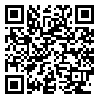Volume 4, Issue 2 (autumn-winter 2017)
DSME 2017, 4(2): 71-83 |
Back to browse issues page
Download citation:
BibTeX | RIS | EndNote | Medlars | ProCite | Reference Manager | RefWorks
Send citation to:



BibTeX | RIS | EndNote | Medlars | ProCite | Reference Manager | RefWorks
Send citation to:
Rezaei Farsani M, Farokhpour M. Study of the Rate, Type and Factors Affecting Drug Errors from the Perspective of Nurses Working in Intensive Care and Emergency Unite of Educational Hospitals of Shahrekord University of Medical Sciences. DSME 2017; 4 (2) :71-83
URL: http://dsme.hums.ac.ir/article-1-156-en.html
URL: http://dsme.hums.ac.ir/article-1-156-en.html
Abstract: (7746 Views)
Introduction: Considering the increasing number of drug errors, this study was conducted to investigate the factors affecting drug errors from nurses' point of view in ICU and Emergency Unite in educational hospitals of Shahrekord University of Medical Sciences in 2016.
Methods: The present study is a descriptive study on 221 nurses working in Shahrekord hospitals. The data gathering tool was a three-part questionnaire. Data were analyzed using descriptive statistics, t-test, ANOVA and SPSS software version 18.
Results: There was a significant relationship between the two sex variables and the type of work-shift with the number of drug errors, so that the mean of medication errors in men was higher than that of women. There was also a significant difference between the numbers of drug errors in different work routines, so that the average of the medication errors was at night shift more than in the morning, but there was no difference between the morning shift and the work rotation. The most important factors affecting the occurrence of drug errors from the viewpoint of nurses was high workload, shortage of nurses in relation to the number of patients in the department and exhaustion due to extra work.
Conclusion: According to the results of this study, nursing managers need to pay more attention to the number of patients with staff in the sectors, reduce workload and decrease the working hours of nurses because the above mentioned factors can increase the likelihood of drug errors.
Citation: Rezaei FM, Farokhpour M. The Rate, Type and Factors Affecting Drug Errors from the Perspective of Nurses Working in Intensive Care and Emergency Unite of Educational Hospitals of Shahrekord University of Medical Sciences. Journal of Development Strategies in Medical Education 2017; 4(2): 61-71.
Methods: The present study is a descriptive study on 221 nurses working in Shahrekord hospitals. The data gathering tool was a three-part questionnaire. Data were analyzed using descriptive statistics, t-test, ANOVA and SPSS software version 18.
Results: There was a significant relationship between the two sex variables and the type of work-shift with the number of drug errors, so that the mean of medication errors in men was higher than that of women. There was also a significant difference between the numbers of drug errors in different work routines, so that the average of the medication errors was at night shift more than in the morning, but there was no difference between the morning shift and the work rotation. The most important factors affecting the occurrence of drug errors from the viewpoint of nurses was high workload, shortage of nurses in relation to the number of patients in the department and exhaustion due to extra work.
Conclusion: According to the results of this study, nursing managers need to pay more attention to the number of patients with staff in the sectors, reduce workload and decrease the working hours of nurses because the above mentioned factors can increase the likelihood of drug errors.
Citation: Rezaei FM, Farokhpour M. The Rate, Type and Factors Affecting Drug Errors from the Perspective of Nurses Working in Intensive Care and Emergency Unite of Educational Hospitals of Shahrekord University of Medical Sciences. Journal of Development Strategies in Medical Education 2017; 4(2): 61-71.
Type of Study: Orginal |
Subject:
Special
Received: 2017/04/30 | Accepted: 2017/08/22 | Published: 2017/10/14
Received: 2017/04/30 | Accepted: 2017/08/22 | Published: 2017/10/14
Tables [PDF 78 KB] (295 Download)
Send email to the article author
| Rights and permissions | |
 |
This work is licensed under a Creative Commons Attribution-NonCommercial 4.0 International License. |







